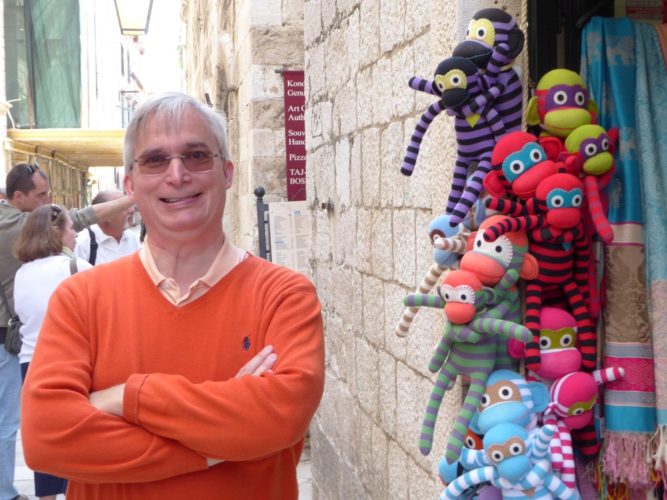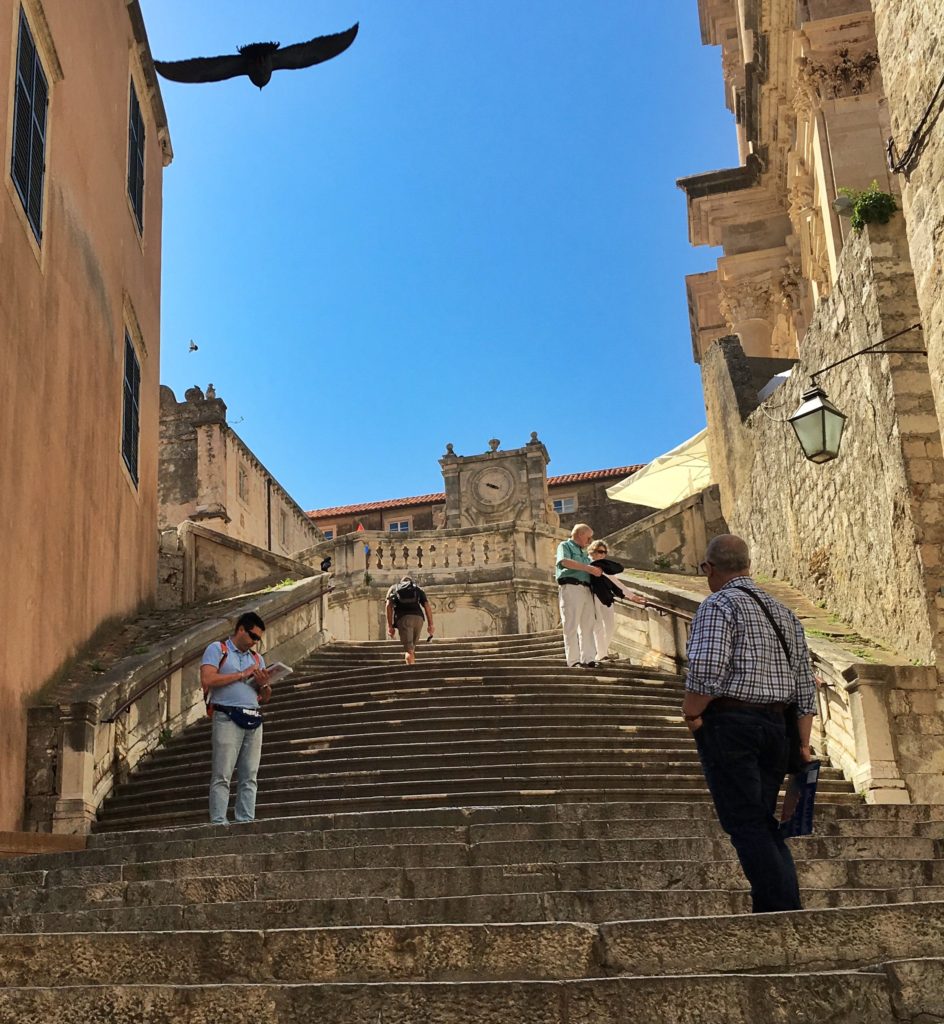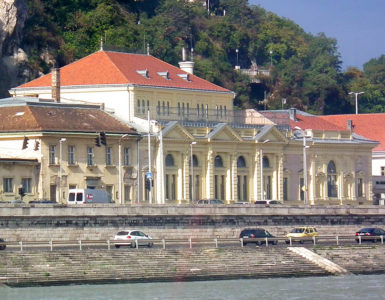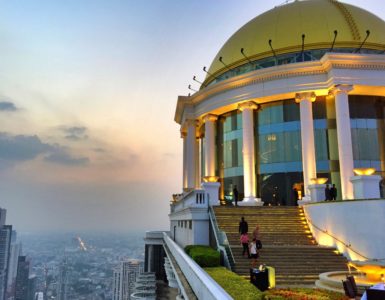We’re in Dubrovnik, Croatia. I’ve never been here, but the panoramic view of the Old City is immediately familiar to me:
If you watch Game of Thrones, you’ll recognize Dubrovnik (enhanced with a digital castle or two) as King’s Landing:
All day long, I get Game of Thrones-inspired deja-vu. Around one corner, I find myself at the foot of the stairs where Queen Cerci begins her walk of shame:
The real thing, of course, is missing the massive Sept (what folks on Game of Thrones call their cathedrals), which is nothing more than a digital fantasy:
And atop a hill, we spy the fortress where the Red Wedding was filmed:
With both Game of Thrones and the next Star Wars movie filming here, Dubrovnik has just about as much production going on as my adopted home town of Atlanta does. But there’s much more going on in and around Dubrovnik than you’ll see onscreen.
On this sunny Sunday morning, Dubrovnik’s war-torn past feels like a half-remembered nightmare. Now, the luminous blue-green bay and steep hills dotted with red tile roofs and centuries-old stone homes (some dating back to the 1400’s) lure two or three massive cruise ships per day:
For locals, it’s a love/hate relationship. On the one hand, more than any city in Croatia, Dubrovnik thrives — due, in large part, to those hordes of eager tourists. On the other hand, when three cruise ships are in port, the Communist-era infrastructure struggles to accommodate ten to fifteen thousand guests.
Some long-time residents we spoke with fear their city will fall prey to the same problems that plague Venice, where the influx of tourists has converted a one-thriving community into a museum with virtually no full-time residents. Our guide for the day — Stefan, a smart, friendly, savvy local in his early thirties — tells us his parents (who still live in the Old City) are worried — about Dubrovnik and about him.
“I’ve moved out to the suburbs, and my parents think I’m crazy,” he says. “I’ll buy their house when they sell it, but I’ll probably convert it to tourist apartments. It’s just too hard to live in the Old City. Parking is always a problem, and there are just three tiny grocery stores now. Plus, because it’s a UNESCO site, you can’t really make improvements to your home without neighbors calling the authorities. Even adding an air conditioner is frowned on.”
Later in the day, we walk the street where Stefan’s parents (who count themselves among those who refuse to add air conditioning) live in a narrow townhome directly across from one of Dubrovnik’s most popular gelato shops. It’s a prime location:
Half-hoping for an invitation inside, I suggest to Stefan that, as a tour guide with a family home on one of the most popular streets in the Old City, he’s missing an opportunity to sell “Visit the Home of A Local” tours.
He laughs. “I thought of this, but my mother was not so crazy about the idea.”
Clyde leans in to me and whispers: “Would your mother want tourists walking through her home?”
I consider this, imagining Japanese tourists rummaging through drawers and peeking into closets. “No,” I say. “There’s no way.”
About an hour down the coast, we visit Ston — Dubrovnik on a smaller scale, and far less touristed. Looming over the city is the massive wall that starts here and continues all the way to Dubrovnik. (To see a longer wall, you have to go to all the way to China.)
Ston is the kind of town where locals can still play soccer in the streets and even catch dinner by fishing in the storm drains. Tourist shops are very few and far between. Instead, we find pristine cafes and unique little “shutter gardens:”
We end the day with a visit to the Vukas family winery. Johnny — one of two brothers who own the winery — steps us through what’s involved in growing grapes in their part of Croatia. We’ve driven by the terraced slopes where the local grapes grow; unlike vines we’ve seen in the U.S., the plants here are so close to the ground, they look almost stunted.
Harvest, then, is all by hand, squatting down in the dirt and moving slowly from plant to plant — something a small family vineyard can’t achieve without lots of help from friends and cousins. (Stafan, our guide for the day, helped with the harvest more than once when he was a boy.)
The red wine is just okay, but the white wine is unusually good — and only available here, because a small operation has no hope of getting distribution in the U.S. We snag a bottle for the trip home, along with two liqueurs (strawberry and peach) made with grappa (the local alcoholic beverage of choice, which, without the benefit of a fruit infusion, tastes like and could be used as jet fuel).
Like Bilbao, Spain (which we first visited on a cruise), Dubrovnik is one of those towns that merits a longer return trip. I’d like more time to discover the winding streets, tiny shops, and bustling restaurants on my own — and maybe, by the time we’re back, Stefan will have converted his family’s house into three compact little apartments, and I’ll get to see inside after all.















Add comment